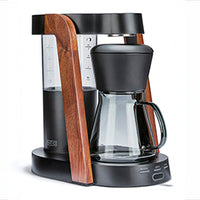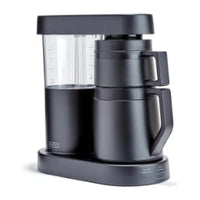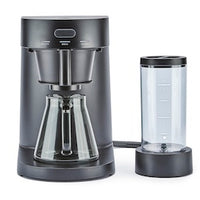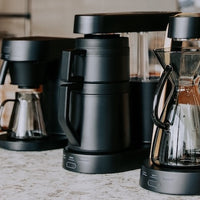The Surprising Reason Your Iced Coffee Always Tastes Watery
Key Takeaways
-
Watery iced coffee usually results from improper brewing strength before chilling
-
Adding ice directly to hot coffee dilutes flavor instantly
-
Brew methods, bean quality, and cooling techniques all affect taste retention
-
Brewing at a higher concentration offsets dilution from melting ice
-
With the right adjustments, you can enjoy full-flavored iced coffee every time
If your iced coffee consistently tastes flat or watered down, the problem probably isn’t your beans — it’s your brewing and cooling process. Iced coffee should be bold, smooth, and refreshing, but too often it ends up tasting like slightly coffee-flavored water.
Let’s explore why this happens and how to fix it.
Why Iced Coffee Loses Flavor
The main culprit behind watery iced coffee is dilution. When hot coffee meets ice, the ice melts rapidly, adding water to your drink and lowering its concentration.
But dilution isn’t the only factor. Other causes include:
-
Brewing too weak to begin with
-
Using stale beans that lack punch
-
Cooling coffee improperly before adding ice
-
Brewing with poor water-to-coffee ratios
The good news? All of these issues can be addressed with a few small tweaks.
Brew It Stronger Than You Normally Would
When making iced coffee, start with a stronger brew than you’d drink hot. The extra concentration compensates for the ice melt.
A good target ratio:
-
Hot coffee: 1:15 coffee-to-water ratio (standard)
-
Iced coffee: 1:10 to 1:12 ratio
This doesn’t mean over-extracting. Keep the brew time and grind size balanced, but use more coffee grounds to boost concentration.
Use the Right Cooling Method
Pouring freshly brewed hot coffee directly over ice is convenient but leads to rapid melting — and instant dilution.
Better cooling methods include:
-
Flash Chilling (Japanese Iced Coffee)
Brew hot coffee directly over a measured amount of ice, replacing part of the brew water with ice. This way, the coffee cools instantly but maintains balance. -
Brew Then Chill
Brew your coffee normally, then place it in the fridge for an hour before pouring over ice. -
Cold Brew for Iced Coffee
Brew coffee cold over 12–18 hours for a naturally smooth, concentrated base that can handle ice melt.
Mind the Ice Ratio
Too much ice can ruin even the best brew. Aim for enough to cool the drink without overwhelming it.
-
For serving: Fill the glass about 1/3 to 1/2 with ice
-
For storage: Chill coffee fully before adding any ice at all
Using larger ice cubes or coffee ice cubes also slows melting.
Why Bean Quality Still Matters
Even perfect brewing can’t make up for beans that lack depth. For iced coffee, beans with a bright acidity and medium-to-dark roast level hold up well when chilled.
Freshly roasted beans bring more aromatics and complexity, which survive better through the cooling process.
The Role of Water in Flavor
Water makes up more than 90% of your iced coffee, so its quality is critical. Using filtered water removes chlorine and minerals that can mute flavors.
Hard water can dull acidity, while overly soft water can leave coffee tasting flat. Aim for balanced mineral content to keep flavor vibrant.
Avoid Brewing Too Far in Advance
Coffee begins losing volatile aromatics within minutes of brewing. If you’re making iced coffee, don’t let the brew sit at room temperature for hours before chilling.
If you must prepare ahead:
-
Store in an airtight container in the fridge
-
Drink within 24 hours for best flavor
Fixing a Watery Cup
If you’ve already poured a cup and it tastes weak:
-
Add a coffee concentrate splash
-
Stir in cold brew for more body
-
Use coffee ice cubes to bring flavor back without extra water
These quick fixes won’t completely restore lost aromatics but can rescue a disappointing cup.
Balancing Strength Without Bitterness
The challenge of stronger brewing is avoiding over-extraction. This is where grind size and brew time matter:
-
For hot brew: Use a slightly finer grind but keep the same brew time
-
For cold brew: Use a coarse grind and adjust steep time for balance
The goal is more dissolved coffee solids without harsher compounds.
Brewing Mindset for Better Iced Coffee
Think of iced coffee as its own recipe, not just a chilled version of your hot coffee. It requires:
-
Adjusted ratios
-
Thoughtful cooling
-
Ice management
-
Quality beans
Making these small changes turns an underwhelming drink into something crave-worthy.
Brewing with Precision
Whether you brew hot or cold, precision matters. Coffee machines from Ratio Coffee are designed to deliver consistent, well-balanced hot brews — a perfect starting point for iced coffee. By applying the same attention to detail when chilling, you’ll ensure the final drink is bold and satisfying, not watery.
Frequently Asked Questions
Can I just double the coffee grounds for iced coffee?
Yes, increasing grounds is a simple way to make a stronger brew, but be sure to keep extraction balanced.
Is cold brew better for avoiding watery iced coffee?
Often, yes. Cold brew starts concentrated and holds up better to ice melt.
Should I use light or dark roast for iced coffee?
Medium to dark roasts tend to retain richer flavors when chilled.
Can I make iced coffee the night before?
Yes, but store it in an airtight container in the fridge and drink within 24 hours.
What’s the best ice for iced coffee?
Large cubes or coffee ice cubes melt slower and prevent quick dilution.
 Ratio Eight S2
Ratio Eight S2
 Ratio Eight Original
Ratio Eight Original
 Ratio Six
Ratio Six
 Ratio Four
Ratio Four
 Compare Machines
Compare Machines






